Country and language
United Kingdom
United States
Deutschland

@media (max-width: 37.5rem){.css-vo707v{font-size:1.5rem;}} Log in
Verify it's you, @media (max-width: 52.5rem){.css-1qvpg8e{font-size:1.375rem;}} no account.
Join Club Eurostar for FREE
- Travelling with Eurostar
- Frequent travellers
- Manage your booking
Frequent or Premium Pass
Please log in to use your subscription pass.
Didn't get the code? Send again

The Channel Tunnel
What is the chunnel.
The Channel Tunnel (often called the 'Chunnel' for short) is an undersea tunnel linking southern England and northern France. It is operated by the company Getlink, who also run a railway shuttle (Le Shuttle) between Folkestone and Calais, carrying passengers in cars, vans and other vehicles.
Eurostar is a totally separate company and is Getlink’s biggest customer, running high-speed passenger services through the Channel Tunnel between London and a number of other European cities on the continent, including Paris, Brussels, Lille, Amsterdam and Rotterdam.
The Chunnel actually comprises three tunnels: two rail tunnels, used for freight and passenger trains, and a service tunnel.
Everything you need to know about the Channel Tunnel

How long is the Channel Tunnel?
The Channel Tunnel is 31.5 miles long or 50.45 km. That's the equivalent of 169 Eiffel Towers stacked on top of each other.
23.5 miles (37.9 km) of the Channel Tunnel is under the English Channel, making it the world's longest undersea tunnel.
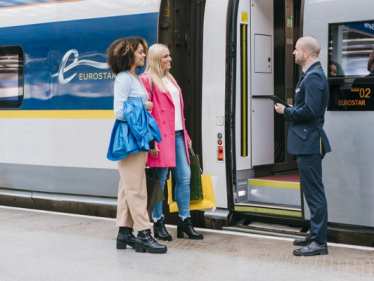
What year did the Channel Tunnel open?
The idea of a tunnel under the Channel was first proposed in 1802 but construction wasn't started until 1988. It was completed in 1993, and Eurostar services started in November 1994.
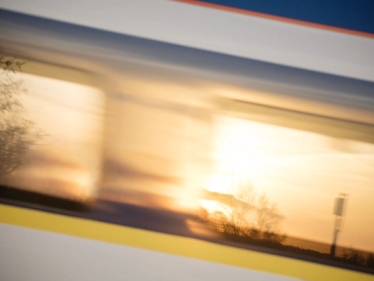
What does the Eurotunnel look like underwater?
This may be a disappointing answer, but you can't actually see the sea from the Eurostar. When you go through the tunnel and look out of the window, all you can see is your reflection in the glass because it's quite dark outside. You can catch glimpses of the walls of the tunnel, of course, which are made of reinforced concrete.
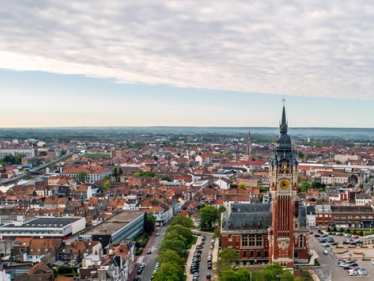
Where is the Channel Tunnel?
The Channel Tunnel runs between Calais in northern France and Folkestone in south Kent. Vehicle traffic for Le Shuttle gets on in Calais and gets off in Folkestone. Calais is about three hour's drive from Paris and Folkestone is about an hour and a half's drive from London.
Our passenger-only Eurostar trains leave from St Pancras International station in London and go directly to the centre of Paris, Brussels and other Eurostar destinations in Europe.
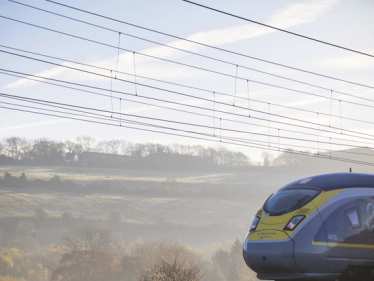
How deep is the Channel Tunnel?
At its deepest, the tunnel is 75 metres (246 feet) below the sea level. That's the same as 107 baguettes balancing on top of each other.
The English Channel is much deeper than the tunnel, with its deepest point measuring 175 meters (574 feet) below sea level.
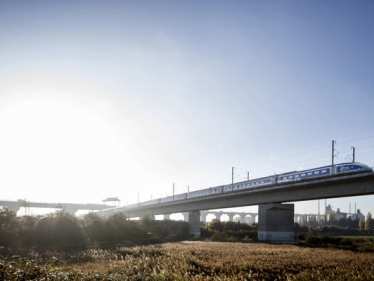
How was the Channel Tunnel built?
The Channel Tunnel is made of three separate tunnels running parallel to each other. One train tunnel running south (UK to France), one train tunnel running north (France to UK) and one service tunnel. All three tunnels were drilled below the seabed and link Folkestone in Kent to Coquelles in Pas-de-Calais.
However, the idea of connecting the UK and France by tunnel is much older than people think – dating back to the early 1800s when its supporters included Napoleon Bonaparte.
Work on experimental tunnels started back in 1880 at Abbot’s Cliff near Folkestone, Kent. Many of the workers used hand tools, but a state-of-the-art boring machine was also used. Work was eventually abandoned until construction on the tunnel as we now know it began again in 1988.
Frequently asked questions
Thinking of hopping on Eurostar for your next European adventure? Got a couple of need-to-know questions before you book your trip? Here we’ve answered a selection of the most frequently asked questions from our customers.
Who can travel through the Channel Tunnel?
Foot passengers can travel with Eurostar, between our UK stations London St Pancras International and our stations on the continent . People who want to travel with their own vehicle or on a coach can use the Eurotunnel Le Shuttle between Folkestone and Calais. Before travelling with either Eurostar or Eurotunnel you will need to go through security, border and ticket checks before going through the Tunnel.
How much did it cost to build the Channel Tunnel?
It took just under six years and 13,000 workers to build the Channel Tunnel. The total cost came at an eye-watering £4.65 billion which would be the equivalent of £12 billion in today's money.
Why travel with Eurostar rather than drive?
- Avoid the stress of driving, with direct high-speed journeys to top destinations, from city centre to city centre.
- Great value fares with no additional costs like fuel, road tolls and parking.
- Simple connections with other rail services in Europe, allowing you to go beyond our direct destinations on a single booking.
- Travel in style on our comfortable trains, including our new, state-of-the art trains with wi-fi.
How fast does the Eurostar go?
The Eurostar travels through the Channel Tunnel at a speed of 100 miles per hour (160kph) although when the train is outside the tunnel it reaches speed of 186 miles per hour (300 kph).
You may also like
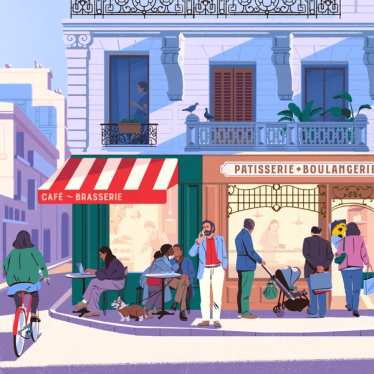
London to Paris trains
Taking the Eurostar from London to Paris is quick, easy and enjoyable. Journey from one world-famous capital city to another in just 2hrs 16 mins.

London to Brussels trains
From comic books to Dutch masters, art nouveau style to ultra-modern, delicious chocolate truffles, hearty ales, Brussels is a city of curious contrasts.

London to Amsterdam trains
With its canals, cobblestone quays and buzzing art scene. Amsterdam is the perfect city for a weekend of culture.
A first-timer’s guide to using the Eurotunnel

May 30, 2024 • 6 min read

Have a hassle-free trip with our guide to traveling on the Eurotunnel © Matt Munro / Lonely Planet
In May 1994, the Eurotunnel – linking England and France under the English Channel – was opened in a ceremony led by French President François Mitterrand and Queen Elizabeth II. In the 30 years since then, the network, which shares its tunnel with the Eurostar service , has carried nearly 10 million passengers per year between England and mainland Europe.
For drivers, Eurotunnel – now branding itself as LeShuttle – competes with the cross-Channel ferries by offering a journey time of just 35 minutes, in contrast to a 90-minute crossing on the fastest car ferry.
From tickets and terminals to queues and border crossings, here’s everything a first-time Eurotunnel user needs to know.
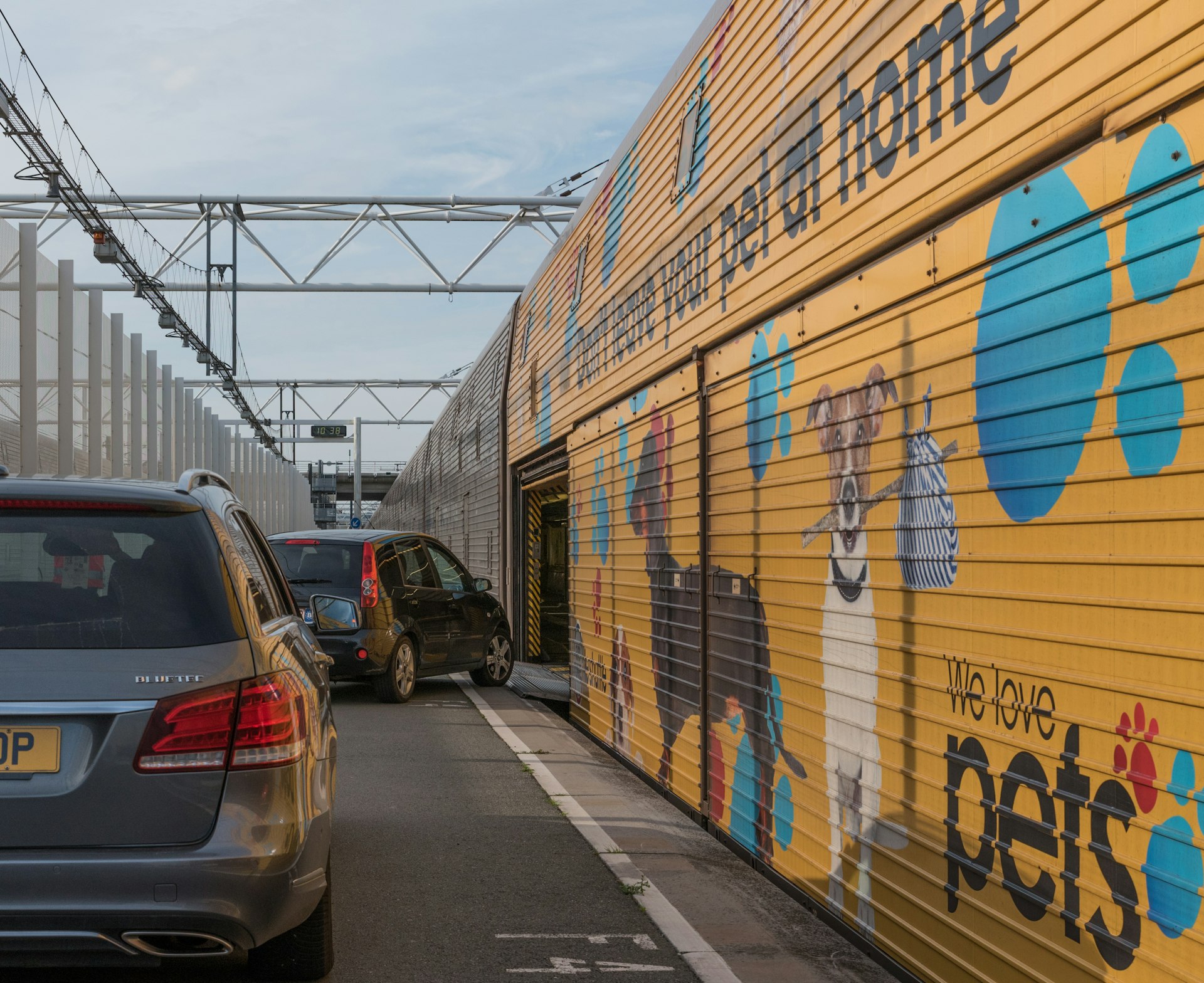
What is the Eurotunnel and where does it go?
The Eurotunnel, or LeShuttle, is a train that carries vehicles and travels under the English Channel, going between Folkestone in Kent , just off the M20, to Coquelles near Calais in France, on the A16 and near the A26. It serves vehicles only – no foot passengers are allowed on board.
How does it compare with the ferry?
Both services give the convenience of being able to take multiple passengers for the price of one vehicle, and to pack as much luggage as you can fit in the car. Both also allow pets on board.
LeShuttle’s claim to fame is the speed of the crossing. For people heading off on a long drive on the other side of the Channel, that shorter 35-minute journey can be worth the usually more expensive price point. However, if you’re hoping to hop out of your car during the ride to take a stroll or pick up some food, the Eurotunnel is not for you.
Don’t want to drive much further? Here’s our guide to Calais and the nearby Côte d’Opale
Where do I buy tickets?
Book tickets online in advance. You will need to provide “Advance Passenger Information” (API) – name, date of birth, passport details etc – online ahead of travel for everyone riding in your vehicle.
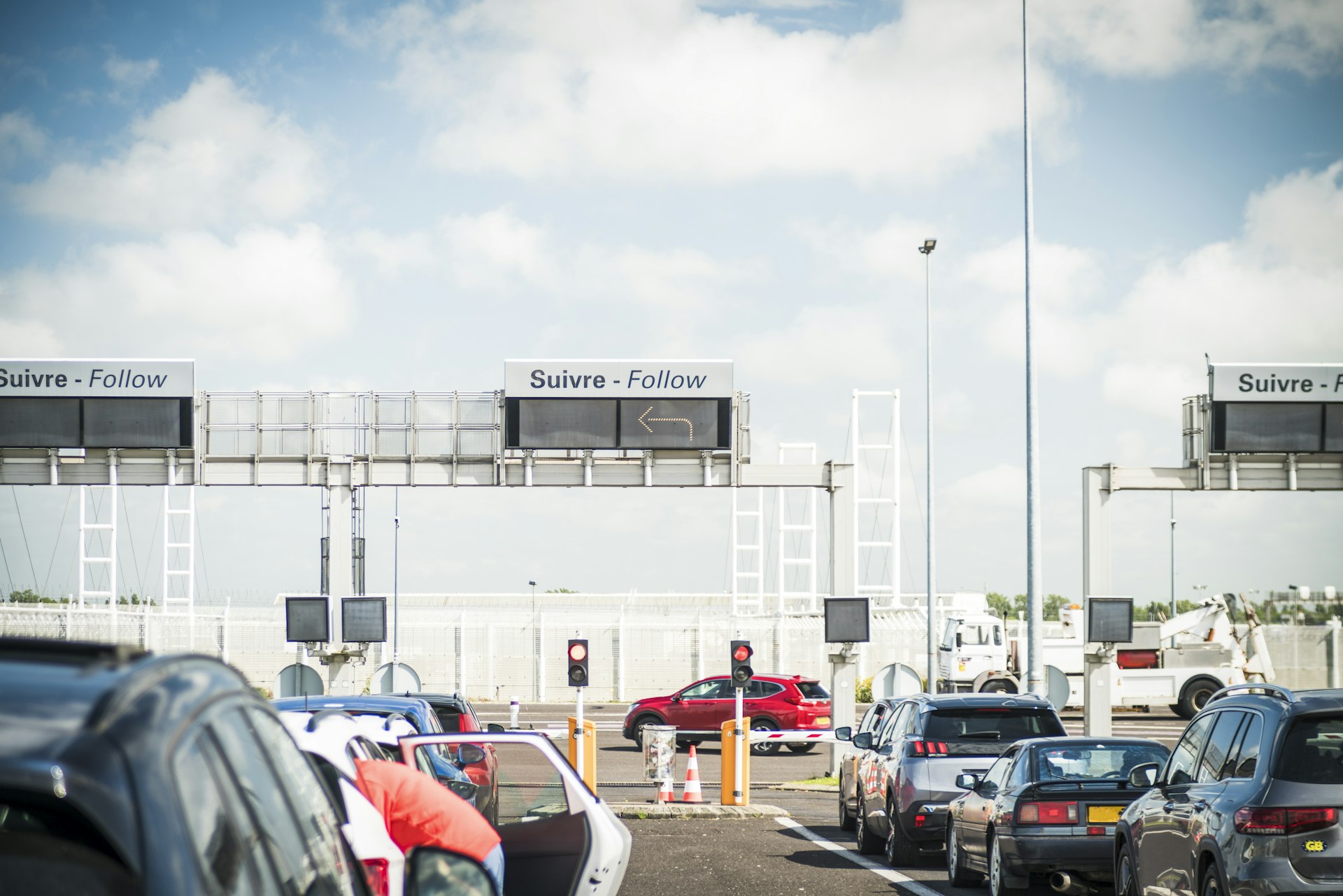
How does it work?
Aim to arrive one to two hours ahead of your booked crossing time. Follow signs off the main roads and onto the Eurotunnel site. Lanes are clearly marked, guiding you to the check-in kiosks. Most kiosks are automatic, but signs will indicate which lanes have staff if you’d prefer to deal with a human. The system uses license plate recognition so, as you pull up at the barrier, your booking will appear on-screen.
Depending on the volume of traffic, you might be offered an earlier crossing time. You have the choice to accept it or stick with your booked train. Unless you’re particularly keen to hang around at the terminal, I recommend taking that gift.
A letter or letter/number combo is assigned to your car and printed out on a piece of paper. Tear it at the top so that it’s shaped like a hanger and hang it from your rear-view mirror so that Eurotunnel staff can see it as you approach them. If your crossing is imminent, staff may wave you straight through, bypassing the terminals. If they don’t, park up and keep an eye on the large screens in the parking lot and within the terminal – they show when you’re likely to be called forward.
Top tip: In Calais, don’t be surprised to be sent on a detour! You may find yourself following signs that appear to be taking you off site. This is a simply a way to manage traffic and you will be directed to check in as soon as possible.
First time visiting France? Here’s what you should know
What happens if I arrive late?
Usually, if you’re late you will be bumped onto the next available service, which might mean hanging around the terminal until the very end of the day. In some cases, you might be asked to buy a new ticket.
What’s in each terminus?
Don’t expect much. Both terminals have restrooms and water fountains, a couple of fast food restaurants and cafes, a newsagent and a relatively small duty-free shop. There’s a little play area for kids too.
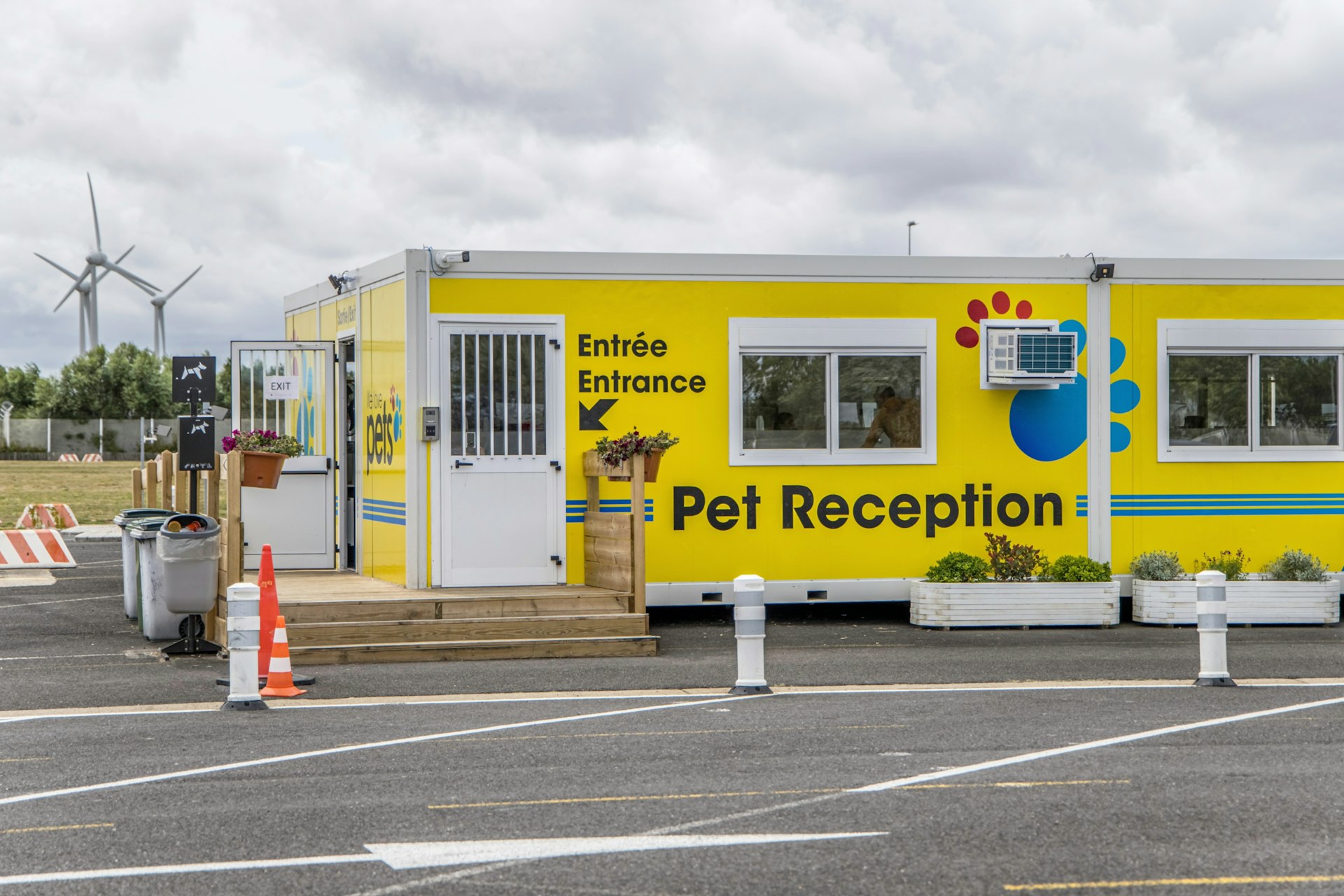
What if I’m traveling with pets?
Traveling with animals requires a bit more planning. Anyone with cats, dogs or ferrets must stop and visit the Pet Reception . The animal must be microchipped and carry an Animal Health Certificate or EU Pet Passport, and dogs must have had tapeworm treatment in advance. There is a dedicated exercise area for dogs near the Pet Reception.
If you’re traveling with rabbits, rodents or reptiles, you must show a certificate that has been approved by a vet to border control.
When do passports get checked?
Once your assigned letter is called, drive on to passport control. Sometimes this is a very smooth process; other times, you might be waiting for hours, shuffling forward one car at a time. You pass through both the UK and French borders at this point – there are no further immigration checks upon arrival.
What about security checks?
Cars are randomly selected for security checks after passport control and you may be asked to pull over while an inspection takes place, including swabbing your steering wheel.
How do you board the train?
Once passports and security are cleared, you are essentially in one massive queue waiting to board a train. You will be allocated a lane to wait in, and you could be sitting there a while. There are toilets here, a few vending machines and an information screen. When a train is ready to board (usually 25 minutes before its scheduled departure time), barriers rise at the front of the lanes and cars proceed from there.
Staff will indicate where on the train they want you to board depending on the size of your vehicle. The train has an upper level in places, so you will need to drive up a ramp to board the top deck. Follow the vehicle in front – you might drive through a lot of carriages – and keep on going until staff indicate you should stop. You will be directed to park up bumper to bumper, then asked to put on your handbrake and apply first gear, and leave your window halfway down.
Pro tip: The barriers can seem to open in a somewhat random order in the stacking area. As you see one lane departing, you might be tempted to sneak across. Don’t. Staff will stop you and send you back to the section you’re meant to be in.
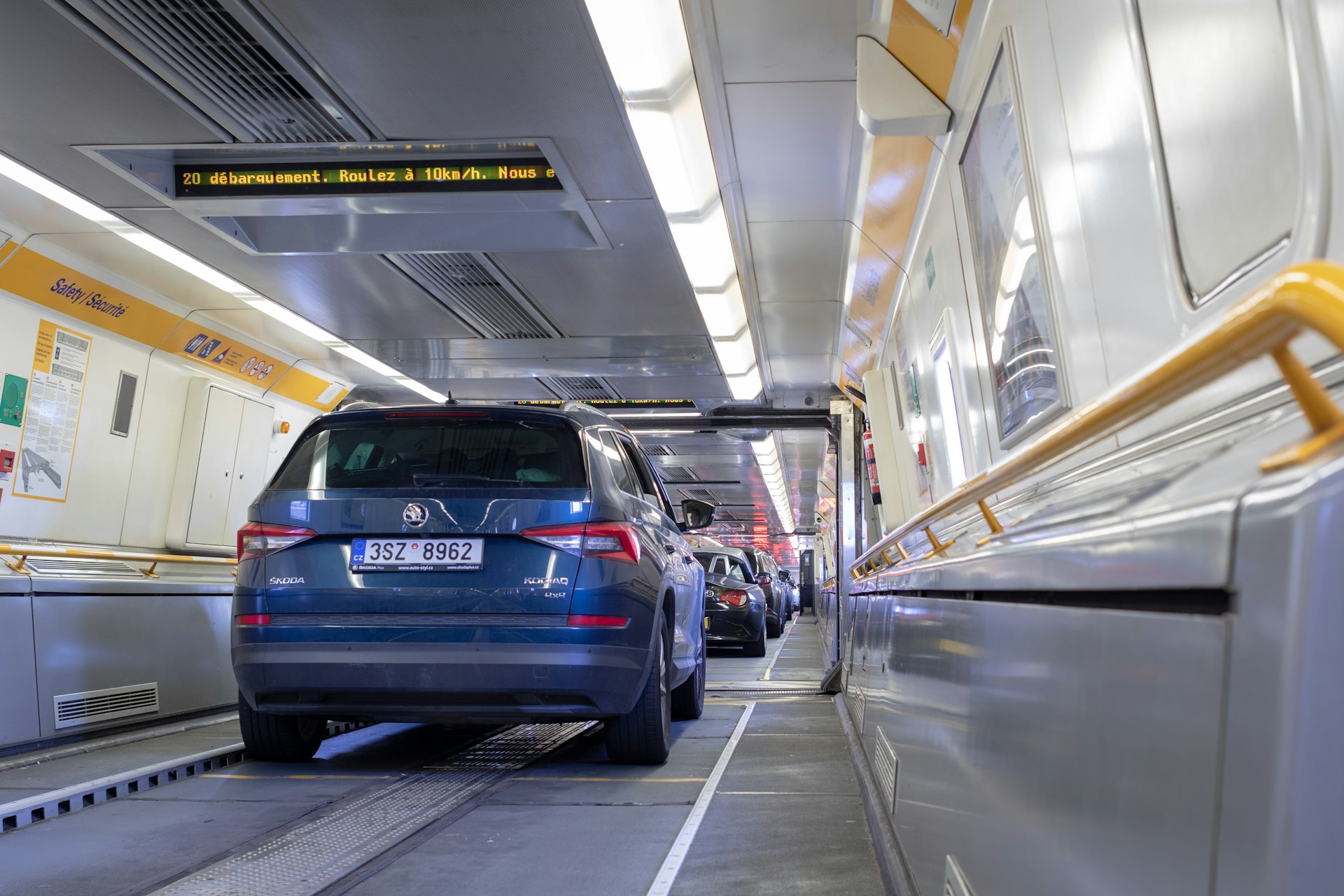
What’s on the train?
Don't get your hopes up for a well-stocked dining car or a gift shop. Even a working toilet is a bit of a stretch on some crossings. Expect bare-bones carriages, with four to five vehicles in each section, and literally nothing else.
Following departure, there are various safety announcements and a member of the train crew will pass through carriages scanning hangers. You’re free to move around outside your vehicle, but there’s really nowhere to go.
What happens on arrival?
As the train approaches its destination, you will be asked to return to your vehicle. Internal doors will open but don’t start your engine until the cars in front of you are on the move so you don’t pump the carriage full of exhaust fumes.
Drive straight off the train and head for the motorways – your road trip has begun.
Keep planning your trip:
- Discover the best road-tripping routes in England
- These road trips in France will take you to all the country's highlights
- Plan the best time to visit France for your perfect vacation
- Find out when is best to visit England
Explore related stories

Tips & Advice
May 29, 2024 • 4 min read
We asked three travel writers about their favorite under-the-radar vacation destinations. Break away from the crowd at these local holiday spots.

May 18, 2024 • 7 min read

May 14, 2024 • 10 min read

May 9, 2024 • 6 min read

May 7, 2024 • 6 min read

May 7, 2024 • 5 min read
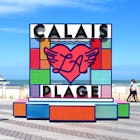
Apr 21, 2024 • 9 min read

Apr 19, 2024 • 8 min read

Apr 17, 2024 • 6 min read

Apr 3, 2024 • 15 min read
France Travel Blog
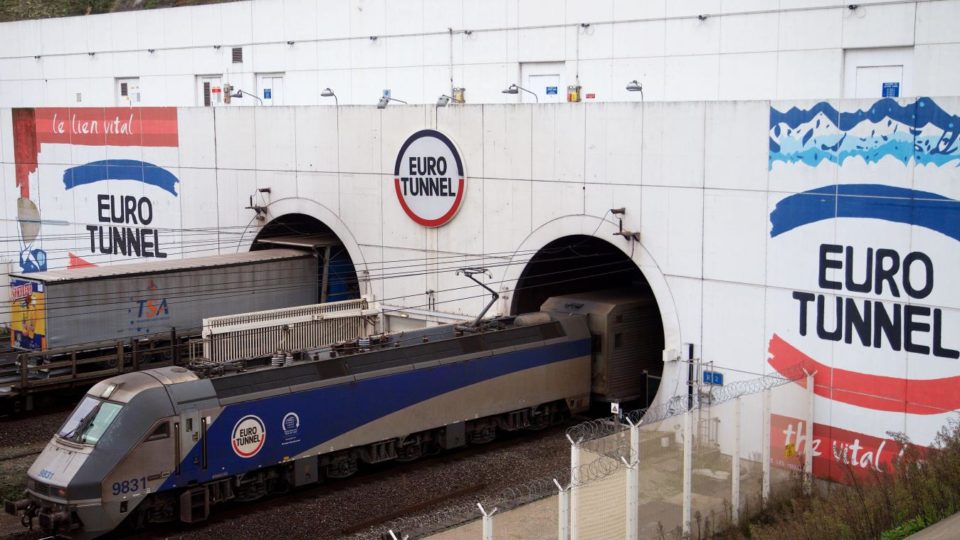
Taking The Channel Tunnel Between London and Paris
You probably know that there are several ways to get from England to France; specifically to get from London to Paris (or vice versa). But there’s no getting around the novelty factor of taking the Channel Tunnel, affectionately known to many as the “Chunnel,” to make the trip. Why take a boring old hydrofoil or airplane when you can zip through a tunnel running underneath a massive body of water instead?
If taking the Chunnel from London to Paris seems like your kind of thing, then here are the various transportation methods that use the Channel Tunnel.
Taking the Eurostar Through the Chunnel
When it comes to speed and convenience, you can’t do much better to get from London to Paris than to take the Eurostar train. The Eurostar zips through the English and French countryside on either end of the Channel Tunnel at a whopping 300 kph (186 mph). Although when it’s going through the tunnel itself, the train is restricted to 160 kph (100 mph). Still, nothing to sneeze at. The Eurostar will have you from London’s St. Pancras station to Paris’ Gare du Nord in a blistering 2.5 hours.
Of course, this speed and convenience come at a price. A round-trip ticket can cost as much as £160 (€180+) if you’re trying to book at the last minute. Booking in advance will save you a bundle, as there are usually specials running for round-trip tickets (otherwise known as “return tickets”) in the £45-60 range (€50-70). One-way tickets are often significantly more expensive than you’d think they would be for a train trip. However, the Eurostar treats one-way trips the same way airlines do and prices them accordingly. They are offering more one-way ticket specials these days (sometimes as low as £50/€60), most often for people who book well in advance, so it’s worth checking.

Taking the Bus Through the Chunnel
For some budget travelers, the Eurostar train fares are a little high; especially if you’re traveling without a set schedule and can’t plan far enough in advance to take advantage of cheap Eurostar specials. Among the cheaper alternatives to the Eurostar that still include a trip through the Channel Tunnel, taking the bus is the most budget-friendly option. What you gain in savings by taking the bus, however, you lose in speed.
There is one option for a bus you can take through the Chunnel to get from London to Paris (or vice versa), and it’s a big coach company with a network of lines crisscrossing pretty much all of Europe – Eurolines. The trip will take roughly 9-10 hours one-way. It’s definitely a time investment that’s only going to be appealing if your finances are more limited than your schedule.
Eurolines operates seven coaches every single day from London to Paris. It leaves London’s Victoria Coach Station and ends at the Eurolines station in Paris near the Gallieni Metro stop. But only four of the departures from London travel to Paris via the Channel Tunnel; the rest load buses onto ferries and travel on top of the water. To go by Chunnel, you’ve got to leave London at either 08:00, 10:00, 14:00, or 22:30. This can change, so be sure to check which trips go through the Channel Tunnel before you book. One-way Eurolines fares generally range from £14-25 (€16-30) in the “Funfare” category (the cheapest tickets). Round-trip tickets are just two one-way purchases (so no discounts on a return trip).

Driving Through the Chunnel
If your trip includes lots of off-beat destinations and back roads in both England and France, that probably means you’ve picked up a rental car somewhere along the way. Generally speaking, driving a car into Paris is best avoided if you can. However, an itinerary that’s heavy on rural France and not so much on cities makes a car a good option. And you can take your car from one country to the other via the Channel Tunnel.
When I picture driving through a tunnel, I picture powering my own vehicle down a long stretch of paved road through a dark tunnel, always watching for that pinprick of light signaling the exit on the other end. That’s not what happens when you drive through the Channel Tunnel. Instead, you drive your car into what’s called the “Eurotunnel Shuttle,” – which is a train. Cars take up about half the train, parked end to end. Also, you can either stay in your car during the trip or get out and walk through the train. But don’t stray far – the trip only lasts 35 minutes.
There are 10 Eurotunnel Shuttles per day to get your car from one side of the Chunnel to the other. They run every two hours starting at 06:00 (there’s a break from the midnight train until the next 06:00 train). The cost of taking your car through the Channel Tunnel can be as low as £53 (€62) for a one-way trip. Also, there are often special discounts on short trips (round-trip tickets when you return 2-5 days later, for instance).
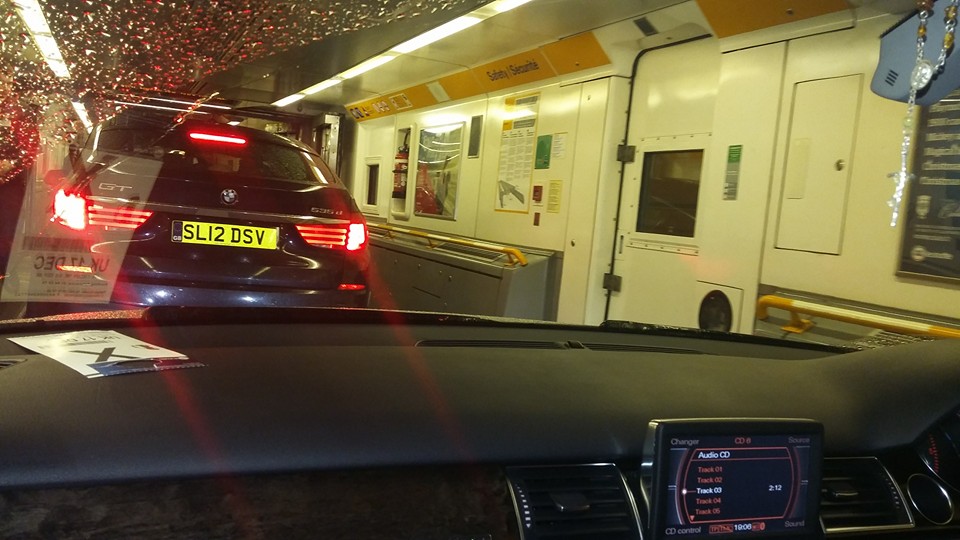
What’s it like traveling through the Chunnel?
As mentioned above, you can’t drive your car through the Channel Tunnel as if it were any other long tunnel. So, you might be wondering what the experience of riding the Eurotunnel Shuttle or the Eurostar train through the Chunnel is like. If you’re dreaming of train cars with big windows that let you look out on water surrounding you on all sides, you’re going to be seriously disappointed.
The trains that speed through the Chunnel are well-lit inside; however, you won’t see anything but blackness outside until you’ve come out from under the water. Of course, since the trip itself is only about a half-hour, it’s not like you’d have the time to really relax and watch fish overhead or something.
Peter is the editor of France Travel Blog. He has traveled to France many times and is ready to share the knowledge in this travel guide for France.

Related Posts
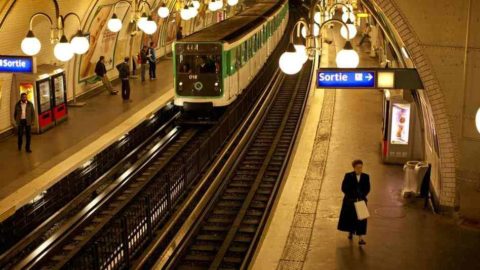
Public Transport Guide For Paris

How to Use the Paris Bus System
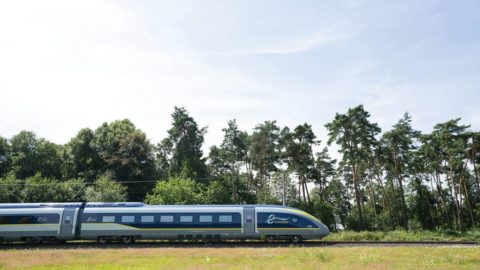
When to Buy Eurostar Tickets

How to Use the Montmartre Funicular in Paris
Recent posts.
- Get Amazing Hotel in New York – Your Guide to Exclusive Deals
- The Gorges du Verdon: A Scenic Road Trip In Southern France
- Marseille Unveiled: Immerse Yourself in the Charm of the Mediterranean with a Captivating City Break
- A Beginner’s Guide to Road Cycling
- 5 Things to Look for When Buying Digital Cameras
- Entertainment
- Things To Do
- Travel Guides
- Travel Ideas
Social Links

Visiting France With Babies: A Comprehensive Guide

Car Rental Tips Every Traveler Should Know

Grenoble Travel Guide

Is Reims Worth Visiting?

Is Arles Safe?
Hit enter to search or ESC to close.
Eurotunnel - Driving "Le Shuttle" Through the Channel Tunnel
:max_bytes(150000):strip_icc():format(webp)/FerneArfin-5b6f00c446e0fb0050324e74.jpg)
The withdrawal of the United Kingdom from the European Union (a move known as "Brexit") formally occurred on January 31, 2020. Following that departure is a transition period lasting until December 31, 2020, during which the U.K. and E.U. will negotiate the terms of their future relationship. This article has been updated as of the January 31st withdrawal, and you can find up-to-date information about details of the transition on the U.K.'s government website .
One of the fastest - and cheapest - ways to cross the English Channel is via Eurotunnel. Whether you cross through Eurotunnel for a short excursion or as one leg of a European touring vacation, you just drive aboard Le Shuttle , and, hey presto, 35 minutes later you're in another country.
First Let's Get a Few Things Straight
- You don't actually drive through the Channel Tunnel. You sit comfortably in your own car (or in a minibus if you're a cyclist) while you are carried through the tunnel on a special train, the Car Transport.
- Nobody really calls the the tunnel the "chunnel" anymore. It is called the Channel Tunnel or Le Shuttle for going by car or Eurostar for the high-speed, passenger-only service.
What is a Trip Through Eurotunnel Like?
First off, if you're not the greatest traveler when it comes to long tunnels, you have nothing to worry about. Crossing the channel on the car transporter has to be the easiest,quickest and most comfortable way to do it ever.
Boarding is a snap. We showed up early for our train and actually got on an earlier departure. Driving on Le Shuttle , the Eurotunnel Car Transporter, was a bit like driving into a garage.
The inside was painted a sunny yellow and the lights stayed brightly lit throughout the journey. So bright, in fact that, while we chatted happily, the dog snoring, oblivious, in the back seat, we raced across the French countryside for at least five minutes before we noticed that the carriage windows had turned from tunnel black to sky blue and we'd actually gone all the way through.
Le Shuttle Is for Cyclists Too
Each Eurotunnel Shuttle can carry six cyclists. The bicycles are carried on a specially adapted trailer and the cyclists travel in a minibus. To book a bicycle crossing, telephone the sales support department, weekdays, from 9 a.m. to 5:30p.m. on 44 (0)1303 282201 . Cycle crossings must be booked 48 hours in advance. If you are traveling with a larger group, ring the sales support department on the same number to discuss arrangements.
Cycles on a roof rack - Some carriages on the Shuttle are double-deckers and some are single. If you are carrying bicycles on the roof of a car that make the car more than 1.85 meters tall (about 5.15 feet), tell the agent when you book your travel so that you can be assigned to an appropriate carriage.
Taking Your Dog
The tunnel is the most comfortable and humane way to travel across the English Channel with a pet. Your animal stays with you the whole way. If you are coming and going from the UK with a dog or cat though, the animal must be proven rabies free, microchipped and registered for the UK Pet Travel Scheme (PETS) , which takes some advanced planning.
Checking-in
Arrive at least half an hour before your departure (and not more than two hours) to allow time to check in, get into the boarding lanes and go through British and French security and frontier controls. In addition to passports and visas (if required) for all passengers, you'll also need registration documents and proof of insurance for your car. If you are traveling with a pet, you need to bring the required PETS paperwork and allow some extra time for your animal's passport and microchip to be checked.
Do You Have to Book in Advance?
You may be able to get aboard the next available shuttle, paying in pounds, euros or by credit card. But it's more expensive than booking in advance and you aren't guaranteed a place. During busy times of day or at the start of European school vacations, you could end up waiting quite some time to board a shuttle.
But you can still be almost spontaneous. Shuttles through Eurotunnel can usually be booked as little as a day in advance.
Can You Accidentally End Up on the Wrong Side of the Road?
Not a chance. Yes they drive on the right in France and on the left in the UK but those clever engineers who designed and built this wonder of the world thought of everything - including how stupid some of us drivers might be.
Roads are engineered to guide you to the correct lane both getting in and out of Eurotunnel. By the time you have gone through British and French passport control and customs and are ready to leave the private roads on the Eurotunnel sites, you've adjusted to the correct side of the road for the country you are in.
Cheap Enough for Day Trips
Eurotunnel is priced to encourage day-trippers and short visits - and it only takes 35 minutes. If you're renting a self-catering cottage in Kent, you can hop across to stock up on cheaper wine and beer, cheaper cigarettes if you smoke, plus lovely French cheeses and groceries to stock your cupboards. Touring in the south of England? Pop across the channel for lunch, a visit to Northern France and a change of scene. The Pas de Calais region, near the tunnel exit in Coquelles, has lovely beach resorts, Flemish-influenced villages and great beer. There are also some wonderful restaurants. Try le Grand Bleu near the ferry port in Calais or the restaurants in the pretty town of Montreuil-sur-Mer . And if you are coming over from France, there's plenty to do within easy reach of the tunnel's Folkestone terminus.
Meals on the Way
Thirty-five minutes is a pretty short trip but if you arrive early, have to queue to board or have a long drive once you're through the tunnel, you could get hungry.
I find the shopping and catering at Eurotunnel facilities on a par with airport duty free - pretty conventional, over priced and not very nice. And once you've entered the Eurotunnel site, you can't really leave without repeating all the frontier security checks.
So allow some time to visit Calais first. See Rodin's original bronze of the Burghers of Calais and learn their heroic story, shop the Calais hypermarkets for wine and bargains, then pick up one last French picnic and head for the tunnel at Coquelles.
Essential Information:
- Where: The tunnel joins Folkestone in Kent with Coquelles, outside Calais. It has its own motorway exits, leading straight to check-in at both ends.
- from France take junction 42 off the A16 motorway
- from the UK take junction 11A off the M20.
- Book: online at the Eurotunnel website or by phoning:
- from the UK - 08443 35 35 35
- from outside Europe - +44 08443 35 35 35
- from France - +33 (0) 810 63 03 04
- Schedule: Up to four departures per hour (from both directions) in bookable 2-hour windows, round the clock.
- Fares: One way fares start at £85. But you'd be smarter booking a round trip. Day trips and overnight stays start at £30 each way and short stays of up to five days start at £66 each way. The fare is per car (prices as of 2019). Motorcycle fares start at £15 and bicycles cost £20 each way.
How to Travel From London to Paris by Train, Bus, Plane, and Car
10 Questions to Ask Yourself Before You Plan Your UK Trip
Crossing the English Channel From Continental Europe
How to Take the Eurostar Between London and Paris
How to Travel to the UK From Paris and Northern France
48 Hours in Calais: The Perfect Itinerary
Driving the Channel Tunnel - Why You Might Need a Plan B
The Castles of William the Conqueror
How to Get From Heathrow to Gatwick: The Complete Guide
The Top 10 Most Underrated Destinations in France
Eurostar High Speed Trains Through the Channel Tunnel
How to Travel From London to Birmingham by Train, Bus, and Car
North Coast of France: The Ultimate Road Trip From Dieppe to Calais
Getting to France by Ferry From the U.K.
Driving in France
Guide to Amsterdam Schiphol Airport
TravelAsker
How long is the Channel Tunnel?
Tourist Attractions
June 25, 2023
By Abigail Lewis
The Channel Tunnel
The Channel Tunnel, also known as the Chunnel, is a remarkable feat of engineering that connects the United Kingdom to France. It is an undersea tunnel that runs beneath the English Channel and is the longest undersea tunnel in the world. It has revolutionized transportation and travel between the two countries, providing a quick and efficient alternative to air or sea travel.
The Length of the Channel Tunnel
The Channel Tunnel is approximately 31 miles (50 kilometers) long, with 23.5 miles (37.9 kilometers) running underneath the English Channel. It stretches from Folkestone in Kent, England to Coquelles in Pas-de-Calais, France. The tunnel is made up of three tunnels; two of the tunnels are used for trains, while the third one is used for maintenance and safety purposes.
History of the Channel Tunnel
The idea of the Channel Tunnel was first proposed in the early 19th century but did not come to fruition until the late 20th century. In the 1980s, the British and French governments agreed to build the tunnel after many years of negotiations. Construction began in 1988 and took six years to complete, with the tunnel opening in 1994.
Purpose of the Channel Tunnel
The Channel Tunnel was built to provide a fast and efficient mode of transportation between the United Kingdom and France. It was designed to accommodate both passenger and freight trains, reducing the time it takes to travel between the two countries and facilitating trade and tourism.
Construction of the Channel Tunnel
The construction of the Channel Tunnel was a massive undertaking that involved thousands of workers and state-of-the-art engineering techniques. The tunnel was constructed using a mix of tunnel boring machines, explosives, and hand digging. It required the digging of two 31-mile (50 km) long tunnels beneath the seabed, with a service tunnel running between them.
The Chunnel’s Technical Specifications
The Channel Tunnel is an impressive engineering achievement that boasts a number of impressive technical specifications. The tunnel is 25 meters (82 feet) below the seabed and has a maximum depth of 75 meters (246 feet) below sea level. It can accommodate high-speed trains that travel up to 100 miles per hour (160 km/h) and has the capacity to transport up to 400 trains per day.
Transportation Through the Channel Tunnel
The Channel Tunnel is primarily used for rail transportation and can accommodate both passenger and freight trains. Eurostar trains provide a high-speed passenger service between London, Paris, and Brussels, while freight trains transport goods between the United Kingdom and mainland Europe.
Safety Measures in the Channel Tunnel
The Channel Tunnel is equipped with a number of safety measures to ensure the safety of passengers and staff. It has a complex fire detection and suppression system, as well as an advanced ventilation system that can clear smoke in the event of a fire. Additionally, the tunnel is monitored 24/7 by a team of dedicated personnel.
Maintenance of the Channel Tunnel
The Channel Tunnel requires regular maintenance to ensure its continued operation. Maintenance work includes regular inspections, cleaning, and repairs. The maintenance team also carries out upgrades and improvements to the tunnel to ensure that it remains safe and efficient.
Benefits of the Channel Tunnel
The Channel Tunnel has had a significant impact on transportation and trade between the United Kingdom and France. It has reduced travel time between the two countries, created new opportunities for trade and tourism, and provided a more sustainable mode of transportation.
Future of the Channel Tunnel
The Channel Tunnel is expected to continue operating for many years to come. However, there are plans to upgrade the tunnel to accommodate even faster trains and increase its capacity. Additionally, the tunnel could play an important role in future plans for a high-speed rail network throughout Europe.
Conclusion: The Channel Tunnel’s Impact
The Channel Tunnel has had a profound impact on transportation and travel between the United Kingdom and France. It has provided a quick and efficient means of transportation, reduced travel time and costs, and facilitated trade and tourism. Its continued operation and future upgrades will ensure that it remains an important part of transportation infrastructure in Europe for many years to come.
Related Posts
- Why do many business hotels have HLN as the default channel?
- Which Youtube channel featuring roller coasters is considered the best?
- Which woman from Australia has successfully crossed the English channel 19 times by swimming?
- Which waterway runs beneath the channel tunnel?
- Which two oceans are connected by the English Channel?

Abigail Lewis
Leave a comment cancel reply.

Where does the Channel Tunnel start and end?
The Channel Tunnel, also known as the Chunnel, is a 31.4-mile undersea tunnel that connects Folkestone, Kent in the United Kingdom with Coquelles, Pas-de-Calais in France. The tunnel consists of three interconnected tubes – two for rail traffic and one service tunnel. It was completed in 1994 and is the longest undersea tunnel in the world.
The journey through the Channel Tunnel takes approximately 35 minutes on the Eurotunnel Shuttle, a vehicle transport service that operates between Folkestone and Coquelles. The high-speed Eurostar passenger trains also travel through the tunnel, connecting London with cities like Paris, Brussels, and Amsterdam on the European mainland.
The construction of the Channel Tunnel was a monumental engineering achievement, involving the cooperation of both the UK and French governments. It has since become a vital link for transportation between the UK and continental Europe, facilitating the movement of goods and people across borders.
1. How deep is the Channel Tunnel?
2. how long did it take to build the channel tunnel, 3. how many trains operate through the channel tunnel each day, 4. what are the safety measures in place within the channel tunnel, 5. how has the channel tunnel impacted travel between the uk and europe, 6. what are the environmental considerations for the channel tunnel, 7. what are the economic benefits of the channel tunnel, 8. how do passengers and vehicles access the channel tunnel, 9. what is the maximum speed of trains within the channel tunnel, 10. how has the channel tunnel evolved since its completion, 11. what are the operational hours of the channel tunnel, 12. what are the future developments for the channel tunnel, faqs about the channel tunnel.
The tunnel reaches depths of up to 75 meters (246 feet) beneath the seabed of the English Channel.
Construction of the tunnel began in 1988 and was completed in 1994, taking a total of six years to build.
Around 50 passenger and freight trains travel through the Channel Tunnel daily, transporting people and goods between the UK and Europe.
The tunnel is equipped with advanced fire detection and suppression systems, as well as a comprehensive safety and security protocol to ensure the well-being of passengers and workers.
The Channel Tunnel has significantly reduced travel time between the UK and Europe, providing a faster and more efficient means of transportation for people and cargo.
Efforts have been made to minimize the impact of the tunnel on the surrounding environment, including the implementation of soundproofing and wildlife conservation measures.
The tunnel has contributed to increased trade and tourism between the UK and Europe, boosting the economies of both regions.
Passengers and vehicles access the Channel Tunnel via terminals located in Folkestone, Kent and Coquelles, Pas-de-Calais.
Passenger trains, such as the Eurostar, can reach speeds of up to 100 miles per hour while traveling through the tunnel.
Since opening, the tunnel has undergone several upgrades and expansions to accommodate growing demands for cross-Channel transportation.
The Channel Tunnel operates 24 hours a day, 365 days a year, providing continuous access for freight and passenger traffic.
Plans are underway to further enhance the capacity and efficiency of the Channel Tunnel, ensuring its continued relevance for trans-continental travel and trade.
About The Author
Douglas Craig
Leave a comment cancel reply.
Your email address will not be published. Required fields are marked *
Save my name, email, and website in this browser for the next time I comment.

IMAGES
VIDEO
COMMENTS
How long is the Channel Tunnel? The Channel Tunnel is 31.5 miles long or 50.45 km. That's the equivalent of 169 Eiffel Towers stacked on top of each other. 23.5 miles (37.9 km) of the Channel Tunnel is under the English Channel, making it the world's longest undersea tunnel.
For drivers, Eurotunnel – now branding itself as LeShuttle – competes with the cross-Channel ferries by offering a journey time of just 35 minutes, in contrast to a 90-minute crossing on the fastest car ferry. From tickets and terminals to queues and border crossings, here’s everything a first-time Eurotunnel user needs to know.
But only four of the departures from London travel to Paris via the Channel Tunnel; the rest load buses onto ferries and travel on top of the water. To go by Chunnel, you’ve got to leave London at either 08:00, 10:00, 14:00, or 22:30.
One of the fastest - and cheapest - ways to cross the English Channel is via Eurotunnel. Whether you cross through Eurotunnel for a short excursion or as one leg of a European touring vacation, you just drive aboard Le Shuttle, and, hey presto, 35 minutes later you're in another country.
If you are traveling by car, the average journey time is around 35 minutes. However, this can vary depending on factors such as traffic, weather conditions, and peak travel times. The Channel tunnel operates 24 hours a day, 365 days a year, so there are always plenty of options for scheduling your trip. FAQs about traveling through the Channel ...
LeShuttle trains can travel through the Channel Tunnel at speeds of up to 140 km/h. How long does the LeShuttle journey take? The journey time of a LeShuttle crossing is 35 minutes, under normal operating conditions.
One of the most frequently asked questions about the Channel Tunnel is how long it takes to travel through it. In this article, we will explore the factors that affect travel time, peak and off-peak schedules, and tips for a smooth journey.
The Channel Tunnel, also known as the Eurotunnel, is a 50.45-kilometer-long rail tunnel that connects Folkestone, Kent in the United Kingdom with Calais, Pas-de-Calais in France. It is the longest underwater tunnel in the world, with 37.9 kilometers of the tunnel being located under the sea.
Throughout its life, the tunnel has proved irresistible to migrants from Africa, the Middle East and beyond who have tried to use it as a way to across the Channel illegally into the UK.
The journey through the Channel Tunnel takes approximately 35 minutes on the Eurotunnel Shuttle, a vehicle transport service that operates between Folkestone and Coquelles. The high-speed Eurostar passenger trains also travel through the tunnel, connecting London with cities like Paris, Brussels, and Amsterdam on the European mainland.